
Y Religion
BYU Religious Education
- 45 minutes 51 secondsEpisode 120: The True Identity of Christ (Krystal V. L. Pierce)
On the day after his Resurrection, the Savior appeared to those who knew him best during his mortal ministry—Mary Magdalene, Cleopas, ten of the apostles, and many other followers. While they saw him physically, they did not recognize him. Instead, they mistook him for a gardener, stranger, passing traveler, and even another prophet, as they misunderstood his role as the Redeemer of Israel or the promised Messiah. Rather than rebuking them, the Savior and ministering angels worked to correct their mistaken expectations by teaching them the true identity of Christ. In this episode, Professor Krystal V. L. Pierce describes how the Resurrected Savior opens the spiritual eyes and minds of his followers and disciples, in ancient and modern times, through visual, audible, and tangible signs and teachings. By learning to identify the spiritual nature of the Savior, we can prepare to see him physically in the Second Coming.
Publications:
- “Seeing, Knowing, and Recognizing the True Identity of Christ” in He Was Seen: Witnessing the Risen Christ (Religious Studies Center, 2024)
- Book of Mormon Insights: Letting God Prevail in Your Life, ed. Kenneth L. Alford, Krystal V. L. Pierce, and Mary Jane Woodger (Religious Studies Center, 2024)
- “The Tower of Babel, the Jaredites, and the Nature of God” by George A. Pierce and Krystal V. L. Pierce in They Shall Grow Together: The Bible in the Book of Mormon (Religious Studies Center, 2022)
- Approaching Holiness: Exploring the History and Teachings of the Old Testament, ed. Krystal V. L. Pierce and David Rolph Seely (Religious Studies Center, 2021)
- “The Ger in the Pentateuch and the Book of Mormon: Refugee Treatment under the Mosaic Law” in Covenant of Compassion: Caring for the Marginalized and Disadvantaged in the Old Testament (Religious Studies Center, 2021)
- “Egypt and the Egyptians” in Pearl of Great Price Reference Companion (Deseret Book, 2017)
- “Egypt’s New Kingdom” in A Bible Reader’s History of the Ancient World (Religious Studies Center, 2016)
- “The Brazen Serpent as a Symbol of Jesus Christ: A Dichotomy of Benevolence and Admonition” in I Glory in My Jesus: Understanding Christ in the Book of Mormon (Religious Studies Center, 2023)
Click here to learn more about Krystal V. L. Pierce
15 January 2025, 5:00 pm - 48 minutesEpisode 119: Hear Him! The Restored Voice of the Lord (Anthony Sweat)
As Professor of Church History and Doctrine Anthony Sweat dropped off a recent painting entitled Jesus of Nazareth, he was met with the response, “That’s not what Jesus looks like.” After a few laughs, Professor Sweat revealed that he intentionally avoided the Euro-centric depiction of Christ. Rather, he implemented elements of Roman Judea men—middle height, honey or olive-colored skin, and shorter black hair and beards. In this episode, Prof. Sweat answers the imperative question that came from this experience, “How do we know the Lord—his characteristics, priorities, doctrines, and commands?” In answering this question, he introduces a four-part study approach from Doctrine and Covenants 19:23 to guide us through our efforts to truly know and understand the Savior. This approach includes the following precepts: Learn of Me (studying the character and nature of Christ), Listen to My Words (analyzing the doctrines, principles, and truths imparted by Jesus), Walk in the Meekness of My Spirit (applying the Savior’s teachings in our lives such as following his commands, directives, and warnings), and Peace in Me (recognizing the peace, comfort, and blessings that come from following him). By using this model in our personal scripture study, we can gain a holistic view of the Savior's character, teachings, commands, and promises, leading us to a deeper and more accurate understanding of him.
Publications:
- “‘Hear Him!’: The Restored Voice of the Lord” from Doctrine and Covenants Insights: Capstone of Doctrinal Understanding (Religious Studies Center, 2025)
- Repicturing the Restoration: New Art to Expand Our Understanding (Religious Studies Center, 2020)
- “A Method for Evaluating Latter-day Saint History” (Religious Educator, 21.3, 2020)
- Website: https://www.anthonysweat.com/
Click here to learn more about Anthony Sweat
1 January 2025, 5:00 pm - 46 minutes 9 secondsEpisode 118: The Doctrine and Covenants as Living Scripture (Casey Griffiths)
When BYU professor Casey Paul Griffiths teaches a scripture class, he often concludes the semester by saying, “The end.” But when he finishes a course on the Doctrine and Covenants, he says, “To be continued . . .” This reflects the ongoing nature of revelation in The Church of Jesus Christ of Latter-day Saints, a living church led by the Savior through his prophets. In this episode, Dr. Griffiths discusses the recently released four-volume work, Scripture Central Commentary on the Doctrine and Covenants, and draws on insights from the Joseph Smith Papers project, launched in 2005. The project ushered in a “golden age” of Church history, making a wealth of historical documents readily available and creating a need for updated commentary on the revelations given to the early Saints. The Doctrine and Covenants stands as a testament to God’s ongoing work, revealing his tender guidance and care for individuals and the Church collectively. Griffiths emphasizes how the Lord communicates with his children, stating, “What happened anciently in the Old Testament still continues today. . . . The day of miracles is not past.” It reminds us that ours is an open canon—living scripture still being written, with each of us invited to play a part.
Publications:
- The Scripture Central Commentary on the Doctrine and Covenants (Cedar Fort, 2024)
- Restorations: Scholars in Dialogue from Community of Christ and The Church of Jesus Christ of Latter-day Saints (Religious Studies Center, 2022)
- Truth Seeker: The Life of Joseph F. Merrill, Scientist, Educator, and Apostle (Religious Studies Center, 2021)
- Website: https://www.facebook.com/bro.griffiths
Click here to learn more about Casey Griffiths
15 December 2024, 5:00 pm - 48 minutes 20 secondsEpisode 117: Kenneth L. Alford (Using the Book of Mormon Art Catalog)
In an address to religious educators, Elder Richard G. Scott taught that “the use of an appealing visual aid can clarify truth.” One platform for accessing such righteous and clarifying images is the Book of Mormon Art Catalog (bookofmormonartcatalog.org). As an open-access repository of visual artwork, inspired by Restoration scripture and Church history, this catalog is a valuable resource for gospel teachers, Church leaders, families, and individuals seeking to visualize the Book of Mormon and other Restoration scripture and events. In this episode Church history and doctrine professor Kenneth L. Alford presents ideas accessing and using images from the catalog. He explains the various search filters available—such as scripture reference, topic, artistic style, etc.—and provides a step-by-step example of how to conduct an image search. Further, he highlights additional resources like videos and blog posts that are available on the website. Using the catalog in our personal scripture study can enhance personal interest in the Book of Mormon while supporting scholarly work on religious art.
Publications:
- “Using the Book of Mormon Art Catalog” (Religious Educator, 25.1, 2024)
- Doctrine and Covenants Insights: Capstone of Doctrinal Understanding (Religious Studies Center, 2025)
- Book of Mormon Insights: Letting God Prevail in Your Life (Religious Studies Center, 2024)
- “Seminary Life Preparation Lessons” (Religious Educator, 25.2, 2024)
- Saints at War: The Gulf War, Afghanistan, and Iraq (Religious Studies Center, 2020)
- “A Method for Evaluating Latter-day Saint History” (Religious Educator, 21.3, 2020)
- Latter-day Saints in Washington, DC: History, People, and Places (Religious Studies Center, 2021)
Click here to learn more about Ken Alford
1 December 2024, 5:00 pm - 46 minutes 15 secondsEpisode 116: Using Precepts to Draw Closer to Jesus Christ (Maclane Heward)
The Prophet Joseph Smith taught “that the book of Mormon was the most correct of any book on earth, and the key stone of our religion, and a man would get nearer to God by abiding by its precepts, than by any other book.” But what exactly are precepts? And how are those recorded in an ancient record relevant to our lives today? In this episode Church history and doctrine professor Dr. Maclane Heward discusses ways to identify key precepts in the Book of Mormon and intentionally incorporated them into our lives. He examines a micro approach (like verse-by-verse analysis) and a macro approach (such as examining larger sections or entire books for overarching themes) for uncovering and understanding precepts. Further, he shares how applying such precepts can lead to personal growth, increased spiritual understanding, and a deeper sense of purpose and direction. By studying and applying the precepts found in the Book of Mormon, we can strengthen our faith in Jesus Christ and develop a closer relationship with him.
Publications:
- “‘Abiding by Its Precepts’: Using Precepts to Draw Closer to Jesus Christ” (in Book of Mormon Insights: Letting God Prevail in Your Life, Religious Studies Center, 2024)
- “The Washington D.C. Temple: Mr. Smith’s Church Goes to Washington” (in Latter-day Saints in Washington, D.C.: History, People, and Places, Religious Studies Center, 2021)
Click here to learn more about Maclane Heward
15 November 2024, 5:00 pm - 45 minutes 54 secondsEpisode 115: A Woman’s Influence on the Delivery of The Family Proclamation (Barbara Morgan Gardner and Olivia Osguthorpe)
Reflecting on the first public interview with Relief Society General President Elaine Jack regarding “The Family: A Proclamation to the World,” Dr. Barbara Morgan Gardner, professor of Church history and doctrine, and Olivia Osguthorpe uncover and clarify truths and perspectives never before documented and critical to historical accuracy. In the months leading up to the general Relief Society meeting of The Church of Jesus Christ of Latter-day Saints on Saturday, September 23, 1995, then-General Relief Society Presidency Elaine L. Jack, Aileen H. Clyde, and Chieko Okazaki likely had no idea this meeting would become one of the most impactful and memorable of the twentieth century. For it was in this meeting that President Gordon B. Hinckley presented “The Family: A Proclamation to the World,” which outlines the Church’s doctrinal beliefs concerning the family, gender, and marriage. What was the Relief Society President’s role in this critical meeting and decision-making process? Why was the family proclamation delivered at this time, in this meeting, and to this audience? In this episode Dr. Barbara Morgan Gardner and Olivia Osguthorpe discuss answers to these questions and more. Through analysis of the journals, personal writings, and interviews with President Jack, Gardner and Osguthorpe provide much needed clarity on the inception and presentation of The Family: A Proclamation to the World.
Barbara Morgan Gardner Publications:
- “Delivering the Family Proclamation: Insights from Former Relief Society President Elaine L. Jack” (Religious Educator, 24.2, 2023)
- “Reanchoring Our Purpose to Jesus Christ” (Religious Educator, 23.2, 2022)
- “Using Section 84 to Emphasize the Priesthood Power of Women” (Religious Educator, 22.2, 2021)
- “‘Line upon Line’: Joseph Smith’s Growing Understanding of the Eternal Family” (in Raising the Standard of Truth, Religious Studies Center, 2020)
Click here to learn more about Barbara Morgan Gardner
Olivia Osguthorpe Publications:
- “Delivering the Family Proclamation: Insights from Former Relief Society President Elaine L. Jack” (Religious Educator, 24.2, 2023)
- “Mentoring: Covenant Women’s Leadership” (Review Magazine, Fall 2024)
1 November 2024, 4:16 pm - 56 minutes 39 secondsEpisode 114: Learning from People of Other Faiths (Joshua M. Sears)
Since the organization of the Church, leaders have called for world-wide religious liberty and harmony: “We claim the privilege of worshiping Almighty God according to the dictates of our own conscience, and allow all men the same privilege, let them worship how, where, or what they may” (Articles of Faith 1:11). In this episode, Dr. Joshua M. Sears, associate professor of ancient scripture, details how we might answer the prophetic call to not only love and respect people of different faiths but to also learn from them. He discusses the importance of adapting trustworthy interfaith resources into our spiritual lives. Additionally, he details how to locate and evaluate reliable resources, and describes one ecumenical resource, BibleProject, as an example. Without diluting our doctrinal uniqueness or missionary mandate, we can build strong relationships with our religious neighbors and learn from the truth that is “scattered liberally across the globe” (Elder Christofferson).
Publications:
- “Learning from People of Other Faiths” (Religious Educator, 24.2, 2023)
- Covenant of Compassion: Caring for the Marginalized and Disadvantaged in the Old Testament (Religious Studies Center, 2021)
- “Study Bibles: An Introduction for Latter-day Saints” (Religious Educator, 20.3, 2019)
- “Deutero-Isaiah in the Book of Mormon” (Y Religion, episode 86, 2023)
- “Study Bibles for Saints” (Y Religion, episode 35, 2021)
- BibleProject Videos: https://bibleproject.com/explore/
Click here to learn more about Joshua M. Sears
15 October 2024, 4:00 pm - 44 minutes 50 secondsEpisode 113: Using the Beatitudes to Understand Christ’s Atonement and Grace (Brad Wilcox)
In 3 Nephi 12:1—12 the resurrected Savior delivers an address to the Nephites similar to the Sermon on the Mount (Matt. 5; Luke 6) and presents the Beatitudes. Like the Matthew 5 account, the Book of Mormon record details how we might enter and build a covenantal relationship with God through the “interrelated and progressive” arrangement of the Beatitudes (Bible Dictionary). But what additional insight does the 3 Nephi account offer that isn’t preserved in the New Testament? In this episode Dr. Brad Wilcox, professor of ancient scripture, discusses his book Blessed Are Ye: Using the Beatitudes to Understand Christ’s Atonement and Grace, co-authored with his brother Roger Wilcox. He details varied interpretations of the Beatitudes, connects them to the first principles and ordinances of the gospel, and examines their relationship to latter-day temple covenants. As we study the Beatitudes, they become more than a code of conduct. Rather, they can be a holy invitation from Christ Himself to enter a covenant relationship with Him, receive His grace, and become like Him.
Publications:
- Blessed Are Ye: Using the Beatitudes to Understand Christ’s Atonement and Grace (Covenant Communications, 2023)
- “His Grace Is Sufficient” (BYU Speeches, 2011)
- Changed through His Grace (Deseret Book, 2017)
- The Continuous Atonement (Deseret Book, 2009)
- Your Patriarchal Blessing (Deseret Book, 2021)
- “Be Not Faithless, but Believing” (Religious Educator, 25.2, 2024)
- “Applying the Atonement of Jesus Christ” (Religious Educator, 12.2, 2011)
- “Names in the Book of Mormon” (Y Religion, episode 83, 2023)
- “Answers About Patriarchal Blessings” (Y Religion, episode 46, 2021)
Click here to learn more about Brad Wilcox
1 October 2024, 4:00 pm - 43 minutes 56 secondsEpisode 112: Use Boldness but Not Overbearance (Jan J. Martin)
As Alma mentored his sons in teaching the gospel, he counseled them not only to cultivate qualities such as diligence, temperance, humility, and self-reflection, but to also use “boldness, but not overbearance” (Alma 38:12) as part of their approach. The words boldness, bold, and boldly are used twenty-seven times throughout the Book Mormon, primarily to indicate that a person, or a group of people, have spoken or acted with “courage, daring, fearlessness; confidence, assurance, [and] security” (Oxford English Dictionary Online, OED). On the other hand, overbearance is used only once and seems to mean “to overcome, put down, or repress, as by power, authority, influence, or emotional pressure” (OED). In this episode, Dr. Jan J. Martin, associate professor of ancient scripture, discusses Alma’s stylistic teaching advice given to his son Shiblon. She highlights two critical areas of Alma’s methodology: the origin of his prophetic and fatherly counsel for teaching the gospel and his practice of leaning into the Holy Ghost for inspiration on what and how to teach. Alma’s experiences in Ammonihah provide important instruction for anyone with leadership or teaching responsibilities who desire to be bold but not overbearing.
Publications:
· “Use Boldness but Not Overbearance” (Book of Mormon Insights: Letting God Prevail in Your Life, Religious Studies Center, 2024)
· “‘Filthy This Day before God’: Jacob’s Use of Filthy and Filthiness in His Nephite Sermons” (Jacob: Faith and Great Anxiety, Religious Studies Center, 2024)
· “The Prophet Nephi and the Covenantal Nature of ‘Cut Off,’ ‘Cursed,’ ‘Skin of Blackness,’ and ‘Loathsome’” (They Shall Grow Together: The Bible in the Book of Mormon, Religious Studies Center, 2022)
· The Power of Christ’s Deliverance (Religious Studies Center, 2021)
· “Samuel the Lamanite: Confronting the Wall of Nephite Prejudice” (Samuel the Lamanite: That Ye Might Believe, Religious Studies Center, 2021)
· “The Theological Value of the King Hames Language in the Book of Mormon” (Journal of Book of Mormon Studies, 27, 2018)
Click here to learn more about Jan J. Martin
15 September 2024, 4:00 pm - 51 minutes 46 secondsEpisode 111: Missionary Work in the Digital Age (Scott L. Howell)
Description
Since the introduction of missionary work in 1830, Saints have used a variety of tools and practices to share the good news of the gospel and bring people unto Christ. Some of the most common methods have included standing on a collapsible soapbox, knocking on doors, using flannel and flip charts to illustrate lessons, sharing slideshows and videos, and utilizing a primary guide, like Preach My Gospel, to teach prepared discussions. The recent introduction of social media and the use of smartphones are two of the latest tools reserved for the youth of this generation as they engage in missionary service. President Harold B. Lee taught that “the principles of the gospel of Jesus Christ are divine. Nobody changes the principles and [doctrine] of the Church except the Lord by revelation. But methods change as the inspired direction comes to those who preside at a given time.” In this episode Dr. Scott L. Howell, assistant teaching professor of Church history and doctrine, discusses the recent shifts in methodology for the gathering of Israel. He provides insight on how the youth might craft their digital dossiers prior to their service, details safeguards for using technology before, during, and after missionary service, and previews a number of phone apps and Church resources for engaging with the gospel online. In melding traditional and modern approaches, we can further the reach of this marvelous work and wonder.
Publications:
· “‘Knocking on People’s Computers’: Missionary Work in the Digital Age” (Religious Educator, 23.3, 2022)
· “Preparing Missionaries in the Digital Age” (Liahona, February 2023)
· “Same Purpose, New Approach: A Case Study of the North Dakota Bismarck Mission using Social Media during COVID-19” (BYU ScholarsArchive, Faculty Publications, 6153, 2022)
· “‘How Beautiful Are the Feet’: The Use of Footnotes in General Conference Reports” (Religious Educator, 24.2, 2023)
· “The Diachronic Usage of Exclamation Marks Across the Major Book of Mormon Editions” (Interpreter, 53, 2022)
Click here to learn more about Scott L. Howell
1 September 2024, 4:00 pm - 44 minutes 38 secondsEpisode 110: The Divine Origin of the Family Proclamation (Byran B. Korth)
Since its release on September 23, 1995, The Family: A Proclamation to the World has become a needed doctrinal anchor during a time of confusion and opposition regarding the centrality of the family. In this episode Dr. Byran B. Korth, professor and associate department chair of Church history and doctrine, discusses his article on the divine origin and inception of the family proclamation and details its inextricable connection to seership and revelation. “But a seer can know of things which are past, and also of things which are to come, and by them shall all things be revealed . . . ” (Mosiah 8:17). Dr. Korth discusses the revelatory process used by prophets and seers to craft the proclamation precept upon precept during the nearly year-long process. Additionally, he explains two profound truths about the proclamation: first, that it serves as a response to the rise of the antifamily movement at world conferences of the United Nations in the latter quarter of the twenty-first century, and second, that it was divinely designed by the Lord’s watchmen to declare to the world the role of the family in God’s plan.
Publications:
- “Seership and World Conferences: The Divine Origin and Inception of the Family Proclamation” (in Religious Educator, Vol. 24, No. 2, 2023)
- “Staying by the Tree of Life” (in Book of Mormon Insights: Letting God Prevail in Your Life, Religious Studies Center, 2024)
- “Becoming as Little Children: Participating in the Household of God” (in The Household of God: Families and Belonging in the Social World of the New Testament, Religious Studies Center, 2022)
- “The How and What of Modern Religious Transmission and Its Implications for Families” (Journal of Family Psychology, 35.4, 2021)
- “Parents Teaching Children to Believe in Christ: ‘An Echo of a Celestial Pattern’” (in Give Ear to My Words: Text and Context of Alma 36 – 42, Religious Studies Center, 2019)
- “Joseph Smith’s 1839 – 40 Visit to Washington” (in Latter-day Saints in Washington, D.C.: History, People, and Places, Religious Studies Center, 2021)
Click here to learn more about Byran Korth
15 August 2024, 7:00 pm - More Episodes? Get the App
Your feedback is valuable to us. Should you encounter any bugs, glitches, lack of functionality or other problems, please email us on [email protected] or join Moon.FM Telegram Group where you can talk directly to the dev team who are happy to answer any queries.
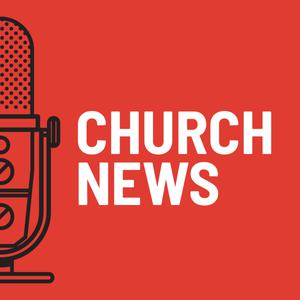 Church News
Church News
 followHIM: A Come, Follow Me Podcast
followHIM: A Come, Follow Me Podcast
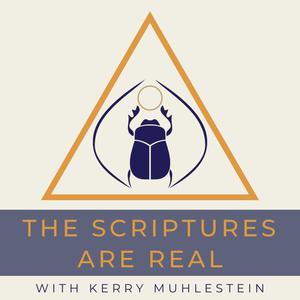 The Scriptures Are Real
The Scriptures Are Real
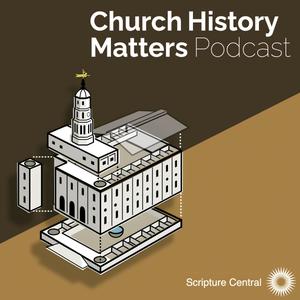 Church History Matters
Church History Matters
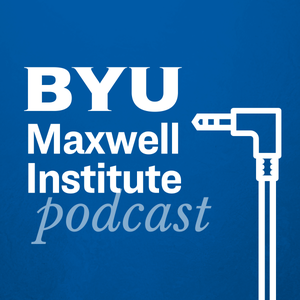 Maxwell Institute Podcast
Maxwell Institute Podcast
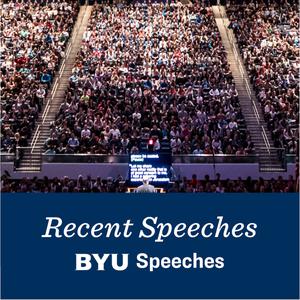 BYU Speeches
BYU Speeches